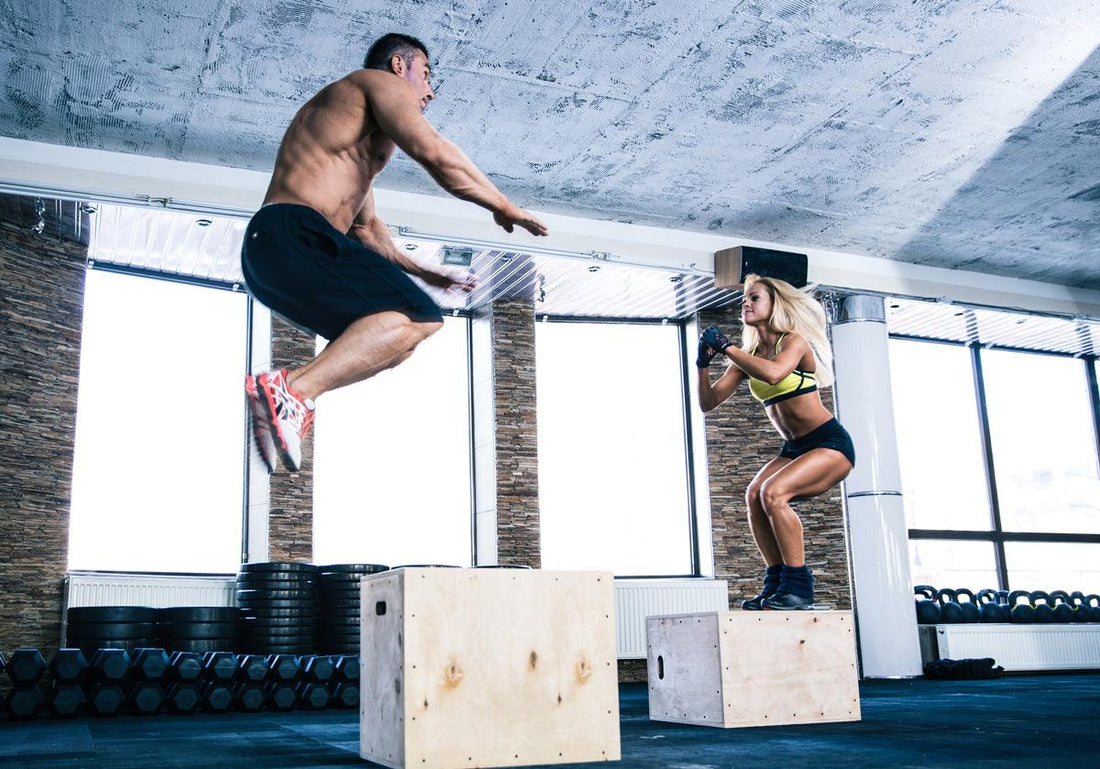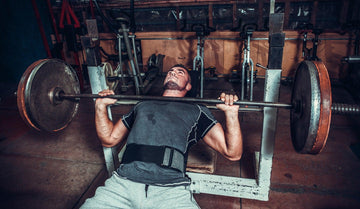

New Leg Training Exercises to Increase Strength and Size
Table of Contents
For many people, the term “leg training” conjures up images of squatting, lunging, and other exercises that work the large muscles of the lower body. While these movements are indeed a part of leg training, they are not the only best eg exercises that can help you achieve your fitness goals.
In addition to squats such as back squat, split squat, goblet squat and walking lunge, your leg day can also include exercises like calf raises, hamstring curls, leg press and donkey kicks. These exercises target specific muscles in the legs, helping to build strength and definition in those areas.
No matter what your fitness goals are or even if you're a beginner, including some leg training in your workout routine is a great way to help you reach them. So get out there and start squatting, lunging, and kicking your way to a better body.
Use BOX JUMP move to build a strong lean athletic physique.
Speed will bring your strength to new levels and the quickest way to get explosive power is with the best leg exercise-BOX JUMP. Jumping increases your strength in upper back and lower body muscle group and it forces you to use every single muscle in your legs and your arms as well. Plyometrics are a fun and effective alternative to a daily strength-training workout. Plyometrics refers to jumping, and in fact, plyometrics used to be known as “jump training”. Training with plyometrics can be the difference between being an average athlete or a great athlete.
Almost every athlete has to jump, so Box Jumps are as sport-specific as an exercise can get. Jumps are an awesome display of power, athleticism, and strength which directly affect qualities to nearly every sport. Incorporating this move makes the muscles work better instead of just focusing on making them bigger. Jumping really challenges the cardiovascular system and is a great way to get the blood flowing before a workout.
For optimal safety and performance, land in a stable position with your knees tracking over your feet, your hips behind your knees and your weight distributed evenly throughout your foot. Box Jumps have great carryover to athletic performance, but if performed incorrectly, they can cause catastrophic injuries. Many athletes will perform box jumps and try to jump atop the highest box possible. This is not safe and form will be compromised. A good rule of thumb is to pick a box in which you can jump onto and you can fit both feet completely. This will ensure that you won’t miss the box and become injured. For optimal safety and performance, land in a stable position with your knees tracking over your feet, your hips behind your knees and your weight distributed evenly throughout your foot.
Practice perfect landing form, by starting with a low box. It is important to land in the same position from which you took off. Sometime you will see athletes land in an extremely deep back squat, torso and quad. This means that the box is too high. This also translates to performance on the field. Do not land in a deep squat! Jumping power comes from hip extension, not hip flexion, so the goal of the exercise should be to move your center of mass as high as possible, not lift your knees up.
The athlete should land in a half squat athletic position. This is the importance when an athlete completes a box jump. If you want to reap the benefits, you have to perform them correctly.
HOW TO PERFORM A BOX JUMP

Begin with a box of an appropriate height 1-2 feet in front of you. Stand with your feet shoulder width apart. This will be your starting position.
Perform a short squat in preparation for jumping, swinging your arms behind you.
Rebound out of this position, extending through the hips, knees, glutes and ankles to jump as high as possible. Swing your arms forward and up.
Land on the box with the knees bent, absorbing the impact through the legs. Step down one leg at a time. Repeat.
A box jump is a plyometric training exercise that can help improve your leg strength and power and maintains a healthy bodyweight. This exercise can be made more challenging by using a taller box, or by holding dumbbells in each hand while you perform the jumps. This plyometric exercise is a great way to train your legs. The explosive nature of the movement recruits fast-twitch muscle fibers, which can help you jump higher and run faster. When done correctly, box jumps can help you develop better coordination and explosiveness in your legs, which can be beneficial for a variety of sports and activities.
Box jumps can also help improve your balance and proprioception, and they can be a great way to add some variety to your leg workout routine. If you're looking for a leg exercise that will give you powerful results, look no further than the box jump. This plyometric movement is great for developing lower body strength and power.

















